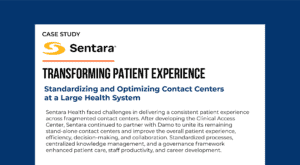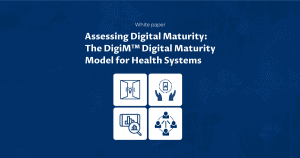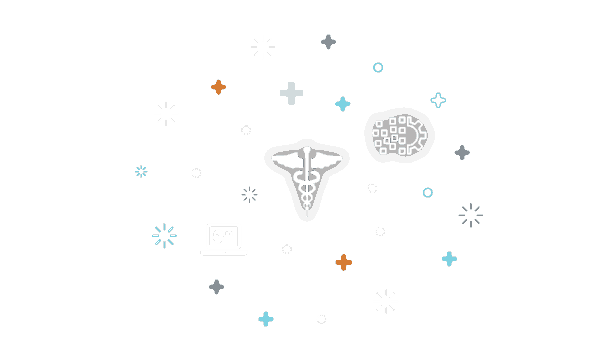Unlocking Healthcare’s Future: Ashis Barad’s Vision for Digital Transformation

In an insightful episode of The Big Unlock podcast, Dr. Ashis Barad, Chief Digital Technology Officer at the Hospital for Special Surgery (HSS), shared his profound perspectives on the ongoing digital transformation in healthcare. Hosted by Rohit Mahajan, Managing Partner and CEO, and Ritu M. Uberoty, Managing Partner of BigRio and Damo Consulting, the discussion delved into Ashis’s unique journey from a practicing paediatric gastroenterologist to a leading figure in health technology, offering critical insights into the challenges and opportunities ahead.
Listen to the full conversation
The “Work-Life Integration” Philosophy: Passion as Fuel
Early in the podcast, Ashis tackled the traditional concept of “work-life balance” with a refreshing perspective, advocating instead for “work-life integration”. Drawing inspiration from books like “Conscious Business,” he suggests that when work is driven by passion, the lines between personal and professional life naturally blur. For Ashis, his work is a source of energy and passion, much like eating is an intrinsic part of life, not a separate task to be balanced. This deep personal investment, he believes, is evident in his fervent discussions about digital health, demonstrating how he truly enjoys the space. This approach underscores that true fulfilment comes from aligning one’s work with their core passions, allowing for a more harmonious and energetic existence, rather than a constant struggle for an elusive balance.
The Physician-Technologist Hybrid: Bridging the Gap
Ashis’s journey from a paediatric gastroenterologist who never stopped practicing to a Chief Digital Technology Officer is a defining aspect of his approach. He emphatically states, “I’m absolutely a doctor first, a technologist second, and I am to this day.” This unique dual perspective is a key differentiator that he believes brings immense value to discussions and solutions in healthcare technology. He intimately understands the frustrations faced by frontline clinicians when “logical” technology solutions, conceived by the C-suite, inadvertently add burden to their workflows. His commitment to spending time with clinical teams, observing their daily realities, and truly understanding their problems from the ground up ensures that the technology solutions implemented are not just theoretically sound but actually solve real problems without creating new friction. This commitment to bridging the gap between clinical practice and technological innovation is crucial for effective digital transformation.
The Driving Force: Democratizing Access to Right Care
A deeply personal experience from Ashis’s childhood fundamentally shaped his mission to democratise healthcare access. At eight years old, during a family trip to rural India, he contracted typhoid fever, which was initially misdiagnosed as malaria. Severely ill and rapidly losing weight, his life was saved by a physician cousin who correctly identified and treated his condition. This profound experience of receiving the “wrong care” until he gained access to the “right care” ignited his passion. He questioned, “How do we give, how do we distribute? How do we democratize? How do we get the right care to all people?” This foundational belief continues to fuel his digital transformation efforts, aiming to leverage technology not just for efficiency but to ensure equitable access and better health outcomes for everyone.
Agentic AI: The Workflow Orchestrator of the Future
Ashis suggests that the two most critical discussions in healthcare today are “agentic AI and change management”. He is a self-proclaimed “techno optimist” but also a pragmatist, wanting technology that genuinely works and solves problems. His excitement for Agentic AI stems from its potential as a “workflow orchestrator,” a capability largely missing in current point solutions or even the Electronic Medical Record (EMR) which, despite its utility, can be burdened by “friction and lots of clicks”. Healthcare, he argues, operates in complex workflows, not isolated moments. He states – “Healthcare is about workflows. Healthcare isn’t about a moment in time.” He further notes, “The only two things that we should be talking about in healthcare right now is Agentic AI and change management.”
Every “handoff” in a patient’s journey – from finding care, to scheduling, receiving treatment, and post-care – presents opportunities for friction and significant waste due to a lack of coordination across vertically structured hospital systems. Agentic AI, by orchestrating across these traditionally siloed operations, promises to improve patient experience, enhance coordination, improve outcomes, and ultimately reduce costs by eliminating the “white space” between different care episodes.
HSS’s “Focus Factory” Advantage: A Lighthouse for Innovation
Ashis chose to join the Hospital for Special Surgery (HSS) for a very purposeful reason, despite having worked for much larger organisations. He refers to HSS as a “focus factory,” dedicated exclusively to musculoskeletal care. This specialisation, while seemingly narrow, actually impacts a significant portion of the population (30-40% experience mobility problems) and involves many algorithmic and elective procedures, making it an ideal environment for the application of Agentic AI. Unlike larger, more diverse healthcare systems where orchestrating across multiple complex specialties (e.g., cardiac, cancer) would take “5 to 10, 20 years,” HSS’s singular focus allows for deep vertical development and a much shorter timeline of “two to five years” for implementing comprehensive digital transformation. Ashis envisions HSS becoming a “lighthouse” for healthcare, demonstrating the feasibility of automating backend processes and orchestrating care workflows. The ambition is not only to show what’s possible but also to codify HSS’s world-class knowledge and distribute it globally, democratising access to the best musculoskeletal care.
Rehumanizing Healthcare with AI: Beyond Efficiency to Effectiveness
A crucial aspect of Ashis’s vision is that digital transformation, particularly through AI, should not lead to “less humans” in healthcare. Instead, he believes it will allow healthcare professionals to “double down” on direct human interaction with patients, freeing them from burdensome backend processes that can be automated by AI and agents. This fundamental shift asks the “existential question: what needs to be human, what is best done by human, what is best done by automation?”
Furthermore, Ashis stresses that AI’s potential extends beyond mere efficiency, which he acknowledges healthcare desperately needs. The second, often overlooked, ‘E’ in AI is effectiveness. He says – “There’s two E’s in AI and everybody forgets the second E. The first E is efficiency and everybody talks about efficiency. However, I think we miss the ball if we only focus on that one. And the second is effectiveness.”
He argues that healthcare must do better than it does today, addressing unmet needs, improving access, and ensuring people receive the “right care” more consistently. HSS’s commitment is not just to perform optimally but to codify that optimal approach and leverage technology to make healthcare more effective at delivering superior musculoskeletal care globally.
Movement: The Heart of Longevity and Healthcare
Finally, Ashis expands HSS’s broader vision beyond orthopaedics to movement itself, a cornerstone of quality of life. In a world focused on wearables and longevity, the ability to move freely is paramount. While much of healthcare focuses on loss associated with disease, musculoskeletal care represents gain—being able to play with grandchildren, run marathons, and live actively into old age. This vision aligns with Ashis’s hope for AI and digital transformation to “actually rehumanize healthcare” by preserving and enhancing the human capacity for life and movement.
Ashis Barad’s insights paint a compelling picture of a future where digital transformation, guided by clinical understanding and a clear vision for effectiveness, improves healthcare delivery fundamentally. His practical approach, rooted in personal experience and strategic focus, offers a roadmap for leveraging advanced technologies like Agentic AI to streamline operations, rehumanize patient experience, and democratize access to world-class care—impacting both the industry and lives worldwide.
A Pediatric-Centric Approach to AI
Pediatric healthcare comes with its own unique challenges—fewer available data points, smaller population sizes, and higher sensitivities around communication and consent. This makes the responsible use of AI even more critical.
Dr. Morse noted that solutions must be designed with children and families in mind, not simply adapted from adult care settings. Whether deploying ambient tools, summarizing clinical notes, or streamlining administrative workflows, every use case must prioritize trust, safety, and patient experience.





